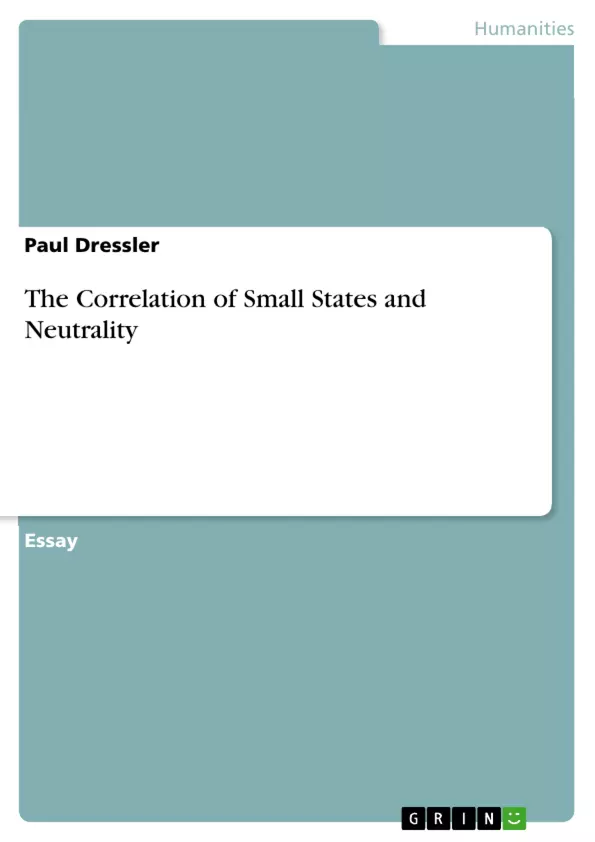This essay outlines the correlation of neutrality and small states. It includes definitions of the term "neutrality" and the term "small state". In the research part of the essay the author shows five examples of five different countries and their motives to adapt neutrality. In the conclusion the author works out a possible scheme to explain why small states adapt neutrality.
Inhaltsverzeichnis (Table of Contents)
- Introduction
- Definition of "Small States"
- Definition and forms of "Neutrality"
- Research
- An Austrian Example - Neutrality to regain Sovereignty
- An Irish Example - Neutrality for Self-Determination
- A Finnish Example - Neutrality as a Geostrategic Imperative
- A Swedish Example - Neutrality with Deviations
- A Swiss Example - Neutrality for building National Identity
Zielsetzung und Themenschwerpunkte (Objectives and Key Themes)
This research essay explores the conditions under which small states adopt neutrality as a foreign policy strategy. It examines the historical context and contemporary relevance of neutrality, focusing specifically on examples from Austria, Ireland, Finland, Sweden, and Switzerland. The essay aims to understand how neutrality has been utilized to achieve various national objectives, such as regaining sovereignty, promoting self-determination, and building national identity.
- Definition and conceptualization of "small states" and "neutrality"
- The historical and contemporary relevance of neutrality as a foreign policy tool
- The diverse motivations and objectives behind the adoption of neutrality by small states
- Case studies examining the implementation and impact of neutrality in different European contexts
- The implications of neutrality for national security and international relations
Zusammenfassung der Kapitel (Chapter Summaries)
- Introduction: This chapter provides a brief overview of the historical context of neutrality in Europe and introduces the research question: "Under what conditions do small states adopt neutrality?".
- Definition of "Small States": This chapter explores different approaches to defining "small states," considering factors such as geographical size, population, economic power, and influence in international affairs. It also introduces Jeanne Hey's definition, which distinguishes between microstates, small states in the developed world, and small states in the "third world."
- Definition and forms of "Neutrality": This chapter examines the concept of neutrality, emphasizing its principle of non-participation in war. It discusses the distinction between neutrality in times of war and peace and the concept of "permanent neutrality" as practiced by many European countries.
Schlüsselwörter (Keywords)
This research essay focuses on the concepts of "small states," "neutrality," "foreign policy," "national security," "sovereignty," "self-determination," and "national identity" in the context of European politics and international relations. It explores the historical and contemporary relevance of neutrality as a foreign policy strategy adopted by small states, examining case studies from Austria, Ireland, Finland, Sweden, and Switzerland.
- Quote paper
- Paul Dressler (Author), 2018, The Correlation of Small States and Neutrality, Munich, GRIN Verlag, https://www.grin.com/document/463703



